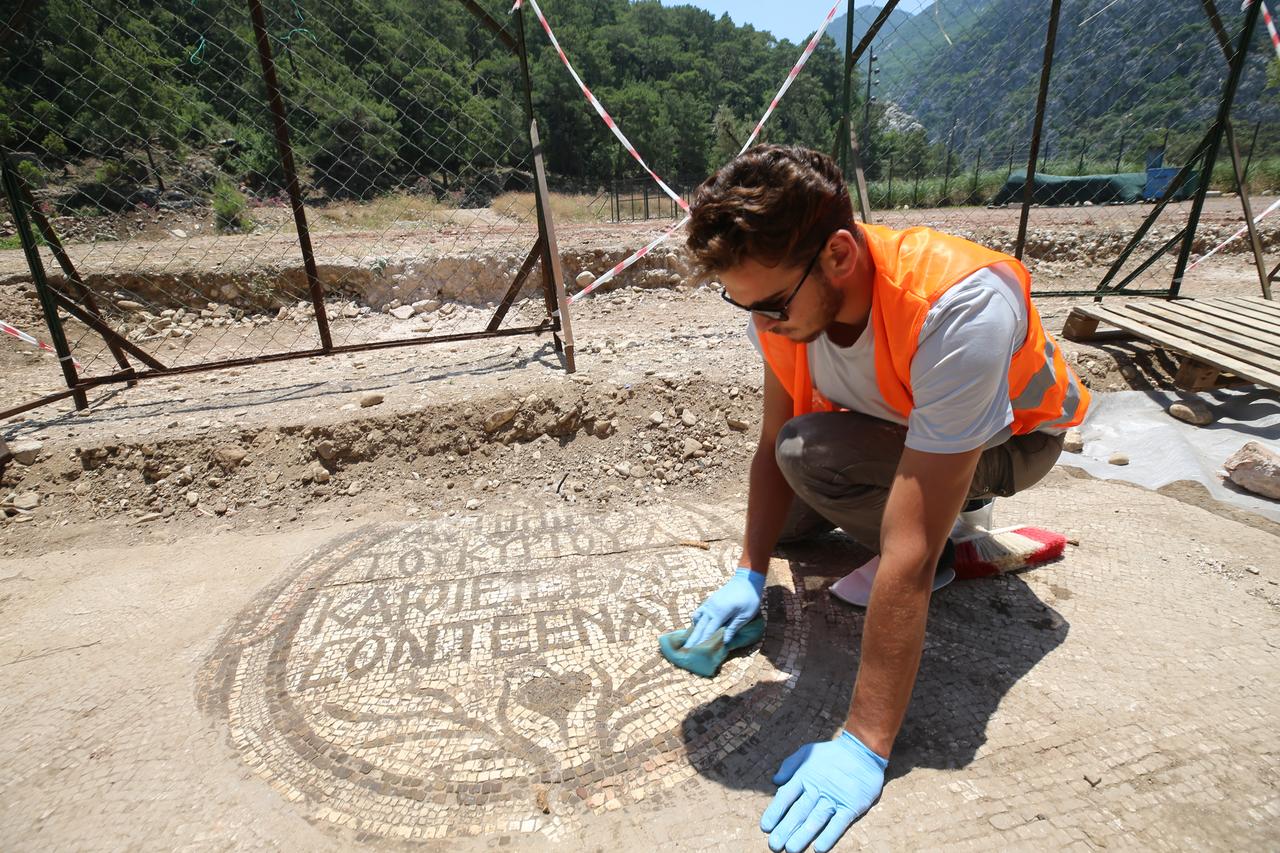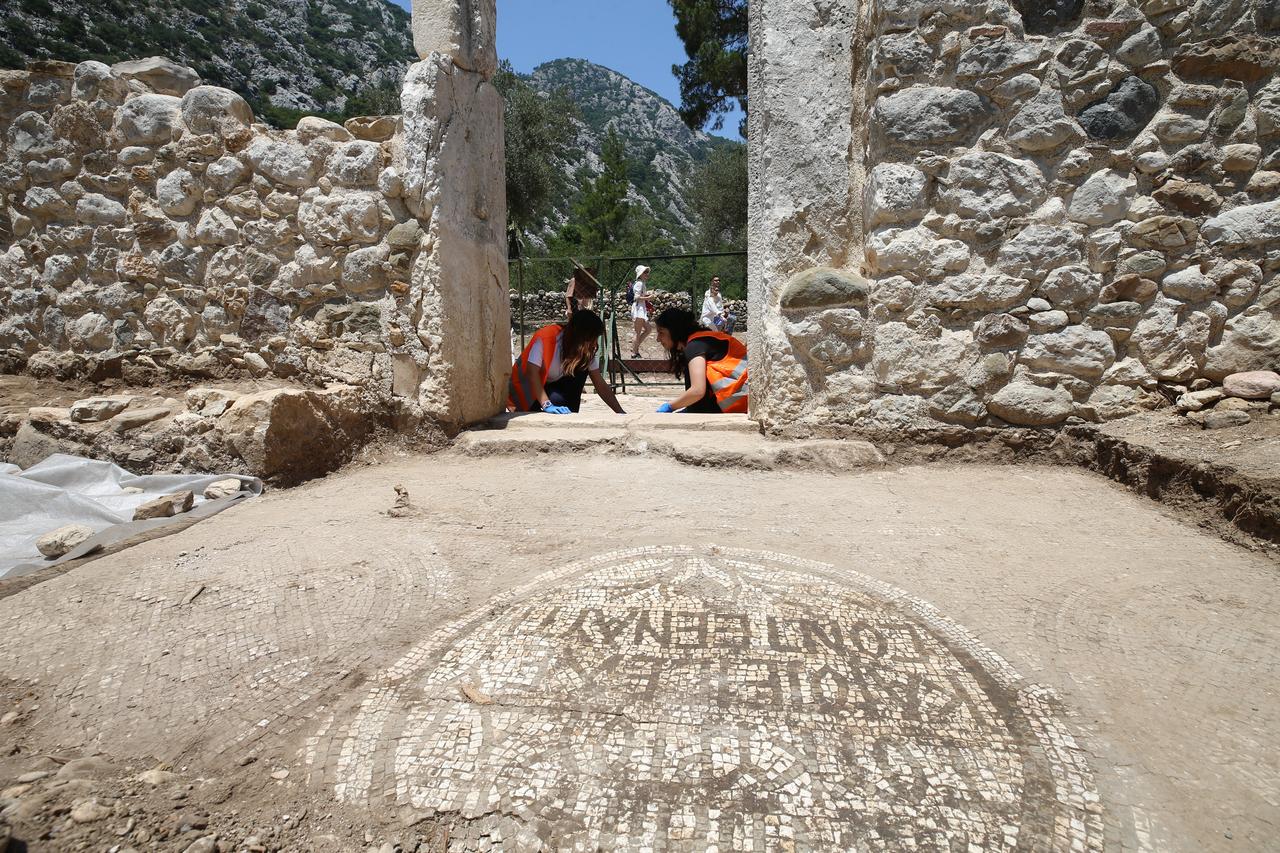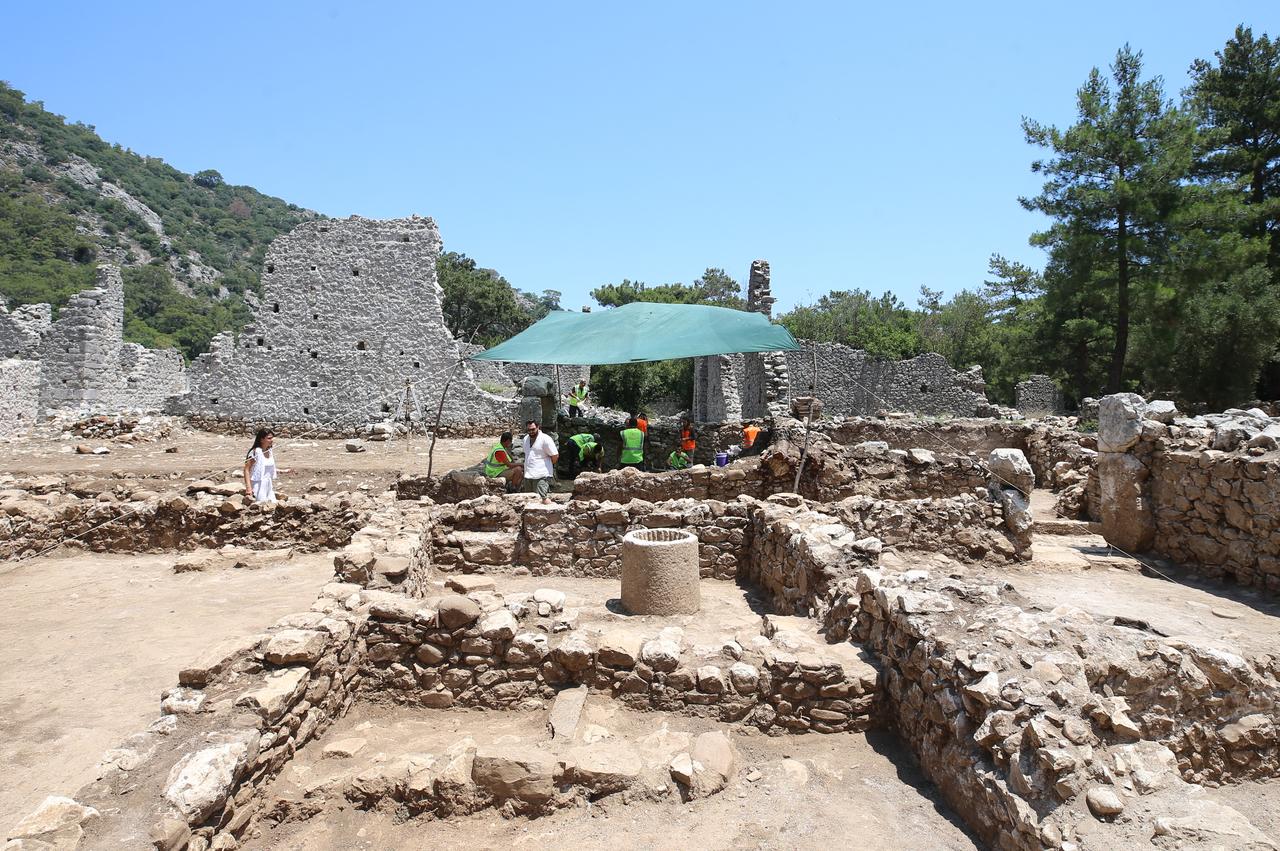
Archaeological excavations in the ancient city of Olympos, located in the Kumluca district of Antalya, Türkiye, have uncovered new mosaics and inscriptions at the entrance and floor of a fifth-century church.
The finds were made during ongoing excavations that have been carried out year-round for the past four years, with support from Türkiye’s Ministry of Culture and Tourism.
The ancient city of Olympos, known for its well-preserved remains from the Hellenistic, Roman, and Byzantine periods, has been the focus of systematic excavations since 2006. Key discoveries to date include churches, a bishop’s palace, monumental tombs, a Roman bridge, and richly decorated structures, including buildings with mosaic floors.

The most recent work focused on Church No. 1, where teams uncovered a new mosaic inscription directly in front of the church’s main entrance. The text reads: "Only those on the right path may enter here," a clear message intended to direct the conduct of those entering the sacred space.

Excavation director Associate Professor Gokcen Kurtulus Oztaskin from Pamukkale University said that Olympos continues to surprise archaeologists with its wealth of mosaics.
She noted similar discoveries had been made in 2017, 2022, and 2023. In this most recent phase, mosaics were found both in the main and annex sections of the church, featuring geometric and botanical motifs, alongside inscriptions bearing the names of patrons who supported the construction.
“These finds confirm Olympos as one of the richest ancient cities in the Lycia region in terms of mosaic flooring,” Oztaskin said.

In addition to the church, excavations also revealed the remains of a civilian residential structure built atop what was once a Roman-era necropolis, or burial area.
This area had been repurposed during the Byzantine period, likely due to population growth, with homes replacing tombs.
The residential complex, built in the fifth century A.D. and reconstructed after a fire in the sixth century, featured stone-paved floors and multiple rooms. Researchers found that even after the fire, the original layout and purpose of the building were largely preserved in the reconstruction phase.
Excavations also brought to light a pithos, a large clay storage vessel, from this civilian zone, which now forms part of the collection at the Antalya Archaeology Museum.

Looking ahead, the archaeological team is preparing to investigate what may be the remains of a temple in the city’s center.
Architectural features such as bossage—a masonry technique using protruding blocks—and finely cut stone walls suggest the presence of a monumental religious building. The area had already drawn attention at the end of the previous excavation season, and full-scale digging is set to begin in the coming days.

According to Oztaskin, excavation plans for 2025 include work in the western necropolis, the bishop’s palace, Church No. 3, and the potential temple structure.
Work in the city’s northern section is expected to conclude within two years, after which teams will shift focus to the southern zones.